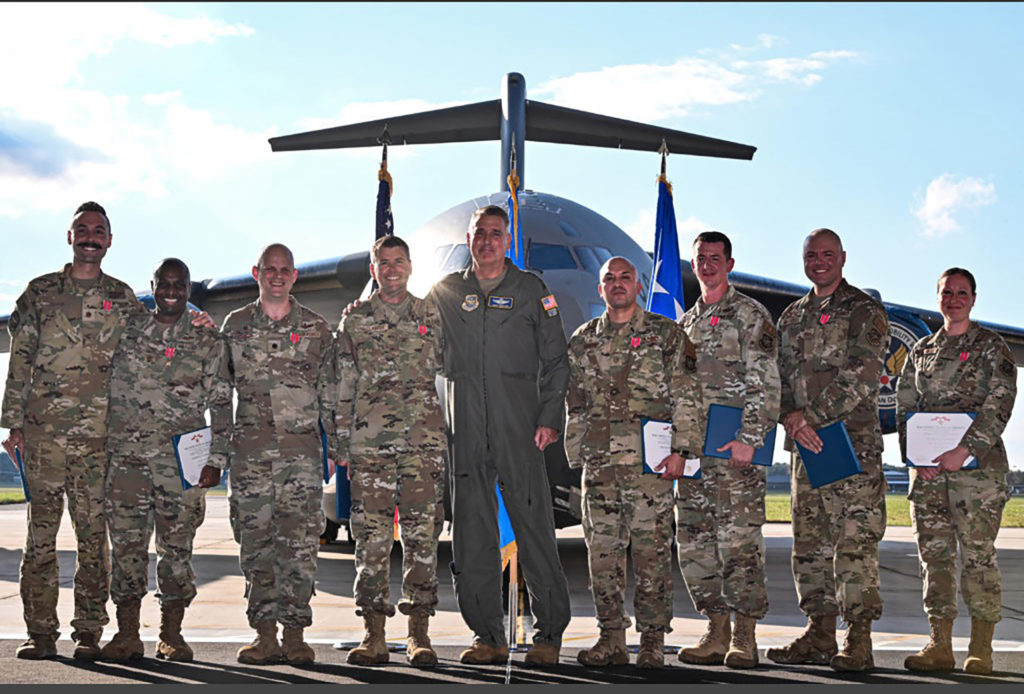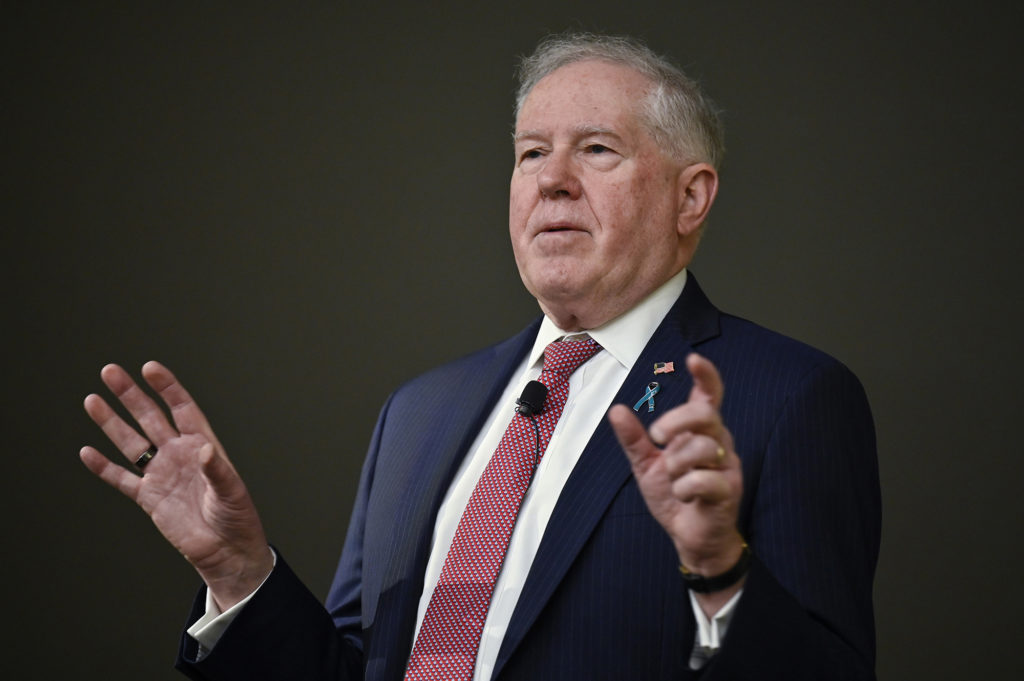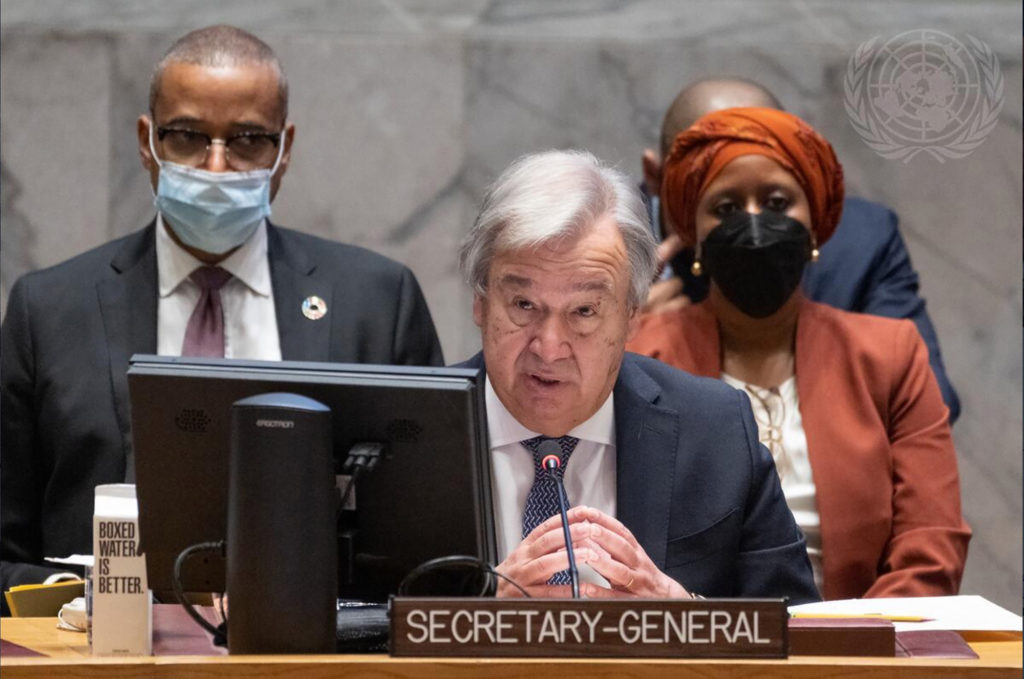Meet the New Air Force Veterans Elected to Congress
By Greg Hadley
The 2022 midterm elections produced several major surprises, with the Democrats holding their razor-thin margin in the Senate and the Republican’s winning a slim lead in the House.
But for national security and defense watchers, the election produced more definitive results. Here’s what it means for the Pentagon and Air Force.
Air Force Veterans
The current Congress includes 15 Air Force veterans—13 in the House and two in the Senate. In the new Congress, both the Senate’s USAF vets—Sen. Roger Wicker (R-Miss.) and Sen. Lindsey Graham (R-S.C.)—remain (neither faced an election in 2022) and a dozen Air Force veterans won re-election, along with three newcomers: Anna Paulina Luna (R-Fla.), Zach Nunn (R-Iowa), and Donald Davis (D-N.C.).
Luna enlisted at 19 and served as an airfield manager, according to media reports. She earned the Air Force Achievement Medal, was honorably discharged, and subsequently joined the Oregon Air National Guard. Davis is an U.S. Air Force Academy graduate and served for eight years, including time as a mortuary officer; as an operations coordinator for “Air Force One” at Joint Base Andrews, Md.; and as an ROTC instructor in North Carolina.
Nunn, a retired lieutenant colonel, served both on Active duty and in the Guard. He deployed multiple times to Iraq and Afghanistan, amassing nearly 1,000 combat flight hours in reconnaissance aircraft.
Incumbents
Of the 26 members of the Senate Armed Services Committee, only two were up for re-election: Sen. Tammy Duckworth (D-Ill.) and Sen. Mark Kelly (D-Ariz.). Both won their races.
Of the 59 members of the House Armed Services Committee, 50 were on the ballot Nov. 8, with the remainder departing the House. And of those 50, 45 held their seats, including Rep. Mike Rogers (R-Ala.), who will likely take charge of the Housed Armed Services Committee, swapping seats with former chair Rep. Adam Smith (D-Wash.), who will likely become the ranking member.
Rep. Elaine Luria (D-Va.), who had been a powerful advocate for the Navy, lost her seat. She is seen, however, as a potential future Navy Secretary.
Composition of the Senate and House Armed Services Committees is still to be determined,
With a 222-213 advantage in the current Congress, Democrats held a 31-28 advantage in seats on the HASC, but the Republicans are expected to have a smaller majority and may hold fewer seats than the Democrats in the next Congress.
For the Senate, a perfectly divided 50-50 chamber in this past Congress led to an even 13-13 split on the SASC. That margin split is likely to remain.
Control of the House and Senate will likely go a long way in shaping debates in the next few years about the budgets the DOD and the Air Force get. Republicans have argued that President Joe Biden’s proposed funding doesn’t keep pace with inflation and needs to be increased, while some Democrats have expressed reluctance to do so.
Kendall Doesn’t See NDS as Calling for Larger Air Force
By John A. Tirpak
The Air Force won’t get larger but will get more modern, Air Force Secretary Frank Kendall said.
“I do not expect major changes in force structure” as a result of the new National Defense Strategy, Kendall said at an Aviation Week defense conference. “What you should expect is major changes in … equipment and modernization.”
The new NDS did not define a force-sizing construct as some past versions did. It doesn’t name the number of wars the nation must be able to fight at once, for example. But it does say the U.S. to be able to defeat one peer adversary while deterring others from taking advantage of that conflict.
“We have to go through a transformation,” Kendall said. Space is of particular concern. “Imagine you have a Merchant Marine, and you woke up one day and discovered you needed a Navy,” he said. “That’s essentially what the Space Force’s situation is.”
For the Air Force, “it’s really about getting on to the next-generation set of capabilities. It’s about transforming … to what we’re going to need for the future.”
“We have a lot of commitments around the world, [and] we need a certain-sized force to meet them,” Kendall said. But he didn’t define what that requirement is. Rather, he reiterated the Air Force’s need to divest aging aircraft that with limited versatility and survivability. “We are doing some divestitures,” he said. “We’ll do more of those to free up resources as we transition and modernize.”
That means that in the near term, the Air Force will shrink further. But, he said, “If I try to look down the road five, 10, 15 years, it’s possible to imagine a larger force structure.”
More planes in the future does not necessarily mean more Airmen. He anticipates manning levels being “fairly stable,” while today’s gear is “swapped out for next-generation equipment.”
He sees a future in which as many as five uncrewed combat aircraft would complement a single crewed fighter.
In the NDS, Russia is referred to as an “acute” threat, Kendall said, because “it still has a formidable military. It’s demonstrating a lot of shortfalls right now, but in the next few years, I would expect it to recover.” Also, “the propensity for aggression has been demonstrated pretty clearly … I don’t expect that to change anytime soon.”
China, however, is a different situation, and without an easing of diplomatic tensions, competition with China could grow into a new kind of Cold War, he said. “It could become something like that,” he explained, but because China’s economy is so intertwined with America’s and that of the West in general, that is less likely.
“There is a lot of economic dependency between China, in particular, and its customers in the world and … its sources of raw materials, as well. … So I think it would be harder to decouple, economically, than during the Cold War,” he said. In that era, there were “two distinct spheres” of economic activity, one dominated by the West, the other by the Soviet bloc.
Another difference: China isn’t trying to export a Communist revolution, as the Soviet Union did during the Cold War. Rather, he said China’s military objectives are “more about control of things in their region, to be the hegemon there.”
China is seeking to expand its influence around the world, however, through its Belt and Road Initiative and to export its “state control … one-party, autocratic rule. … That’s their model, and they’re trying to push it.”
US Backs Limits on Autonomous Weapons
By Amanda Miller
The U.S. became one of 70 countries to favor limiting autonomous weapons in a Joint Statement on Lethal Autonomous Weapons Systems issued by the U.N.’s First Committee on Oct. 21. The statement urges “appropriate rules and measures, such as principles, good practices, limitations and constraints” to allay “serious concerns from humanitarian, legal, security, technological, and ethical perspectives” over the use of autonomous weapons.
Meanwhile, the Stimson Center published “Bolstering Arms Control in a Contested Geopolitical Environment,” a policy brief by Michael Moodie and Jerry Zhang that argues disruptive new technologies such as artificial intelligence, “heightened competition” among world powers, and a “rapidly deteriorating security environment” have combined to constrain arms control talks over the past decade.
The authors said “plausible scenarios” can be seen in which AI “plunges the world into a devastating war by error,” and concluded that lethal autonomous weapons “could exacerbate competition and make conflicts more destructive.” Already, “the risk grows that they will fall into the hands of terrorists, criminals, warlords, or other malign actors.”
The U.S. opposed a treaty to govern AI-driven weapons in 2021, but signed the joint statement, which stresses the need for “human beings to exert appropriate control, judgment and involvement in relation to the use of weapons systems in order to ensure any use is in compliance with International Law, in particular International Humanitarian Law, and that humans remain accountable for decisions on the use of force.”
In remarks to the U.N. Security Council on Nov. 3, Secretary-General Antonio Guterres warned that the “world is transforming at breakneck speed” and that lethal autonomous weapons together with cyber warfare “are presenting risks we barely comprehend and lack the global architecture to contain.”
Former Deputy Secretary of Defense Robert O. Work said in a call with reporters in September that Western militaries “see AI primarily as a means to help humans make better decisions”—that autonomous weapons are not being “designed to supplant the human decision-maker.”
Work was vice chair of the National Security Commission on Artificial Intelligence, which completed its work in 2021. He now serves as a member of the Board of Advisors for the AI-oriented Special Competitive Studies Project and is listed as chairing the board of AI contractor SparkCognition Government Systems.
“In the U.S. conception, our AI systems will be able to create their own courses of action to complete a task assigned to them by a human and choose among them,” Work explained. “But we are staying far away from any system that could choose its own goals and choose among them.”
However, he acknowledged that a weapon’s ability to “set its own objectives” is “going to be central to competition. “We don’t know how authoritarian countries will view this. Perhaps they will assign more decision-making authority to machines than the West would be comfortable doing … and it might be a fruitful area for discussion among all the competitors.”
Arms control talks could help “make sure we don’t get to the most dangerous systems that I think of,” Work said—“and those are systems that might be able to unilaterally order a preemptive or a retaliatory strike. That would be extraordinarily destabilizing, and I think it would be in the interest of all competitors to stay away from those type of systems.”
In a speech to Air Force Academy cadets in February, the Space Force’s Vice Chief of Space Operations Gen. David D. Thompson told cadets the U.S. will need machines that decide to kill—and that confronting the inherent ethical dilemmas “can’t wait.”
The Vatican’s Archbishop Gabriele Caccia, permanent observer of the Holy See to the United Nations, delivered a statement to the First Committee on Oct. 12 arguing that lethal autonomous weapons “cannot maintain compliance with International Humanitarian Law” if they separate “the unique human capacity for moral judgment from actions that could result in bodily harm or even death.”
10 DFCs for Afghanistan Evacuation Mission

By Greg Hadley
Ten Airmen, including the C-17 crew who flew a record-breaking 823 people to safety during the noncombatant evacuation out of Afghanistan last August, received the Distinguished Flying Cross on Nov. 1.
Every member of that famous C-17 flight, call sign REACH 871, received a DFC with a “Valor” device, denoting “an act or acts of heroism by an individual above what is normally expected while engaged in direct combat with an enemy of the United States … with exposure to enemy hostilities and personal risk.”
Air Mobility Command boss Gen. Mike A. Minihan awarded the Distinguished Flying Crosses, the military’s fourth-highest award for extraordinary aerial achievement, along with eight Bronze Star Medals in a ceremony at Joint Base McGuire–Dix-Lakehurst, N.J.
The awards are part of a larger batch of medals and decorations approved by AMC in October for Operation Allies Refuge, the name given to the evacuation from Hamid Karzai International Airport in Kabul, Afghanistan, as the Taliban seized control of the government and thousands of desperate Afghan nationals, American citizens, and individuals from partner nations scrambled to leave the country.
Members of the 621st Contingency Response Wing, who received the Bronze Star Medals given Nov. 1, helped to restore order and secure the airfield, and began directing air traffic, with the help of other units. The 621st Contingency Response Group will also receive the Gallant Unit Citation.
At HKIA, chaotic scenes unfolded Aug. 15, as Afghan citizens breached the airfield, with some attempting to climb onto U.S. Air Force C-17s.
Before that, however, the crew of REACH 871, from the 305th Air Mobility Wing, made the decision to take off with as many Afghan evacuees as possible, despite the lack of an official manifest, due to the deteriorating security situation.
The flight quickly made international headlines—audio of the crew informing an Air Force control center that they had 800 passengers on board circulated on social media, as did a photo showing hundreds of evacuees crammed into the C-17’s cargo bay.
AMC initially said 640 people had been rescued, before revising that number to 823 after counting the children on board the flight. That far exceeded the previous record of 670, and more than doubled the typical maximum of about 300 people when the C-17 is outfitted for large passenger loads.
The flight also produced the photo of a young Afghan child sleeping beneath an Airman’s jacket—a powerful image that went viral and has been highlighted by many Air Force leaders as symbolic of the service’s contribution to the evacuation.
The Airman to whom the jacket belonged, now-Senior Airman Nicolas Baron, was one of seven crew members on REACH 871 who received the Distinguished Flying Cross. The others were aircraft commander Lt. Col. Eric Kut, pilots Capt. Cory Jackson and 1st. Lt. Mark Lawson, loadmaster Tech. Sgt. Justin Triola, and flying crew chiefs Staff Sgt. Derek Laurent and Senior Airman Richard Johnson.
Three other Airmen involved in the evacuation received DFCs from Minihan, all with the “Combat” device: Capt. Andrew Perrella, a C- 17 pilot, Capt. Jedd Dillman, a flight nurse, and Master Sgt. Matthew Newman, a respiratory therapist.
Dillman and Newman are the first aeromedical evacuation Airmen in AMC history to receive the Distinguished Flying Cross, and Laurent and Johnson are the first two flying crew chiefs, according to an AMC release.
The following Airmen from the 621st Contingency Response Wing received Bronze Star Medals, which are awarded to those who distinguish themselves “by heroic or meritorious achievement or service, not involving participation in aerial flight, in connection with military operations against an armed enemy:”
- Col. Colin McClaskey
- Lt. Col. Joshua Johnson
- Maj. Michael Sattes
- Maj. Adam Cooper
- Master Sgt. Dustin Sanderlin
- Master Sgt. Bryan Masters
- Master Sgt. Brian Cantu
- Tech. Sgt. Gabrielle Di Clementi.





